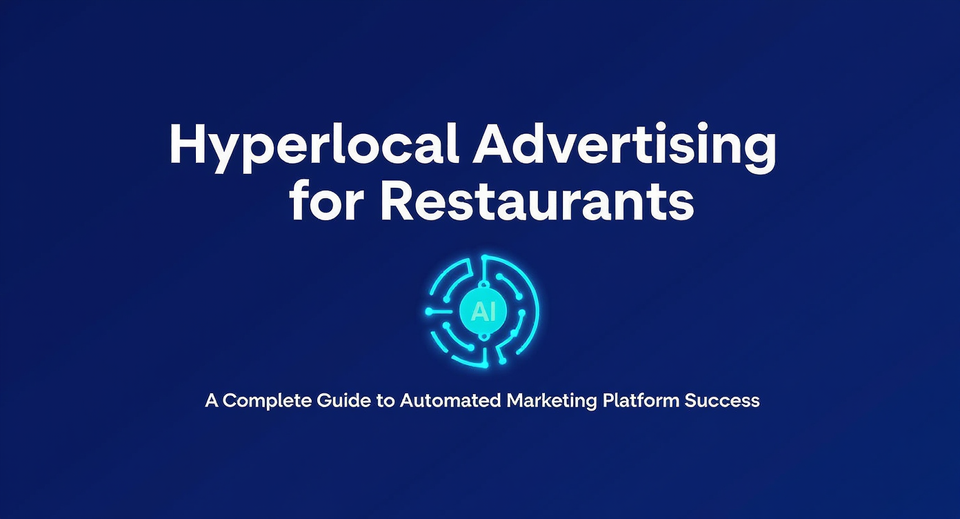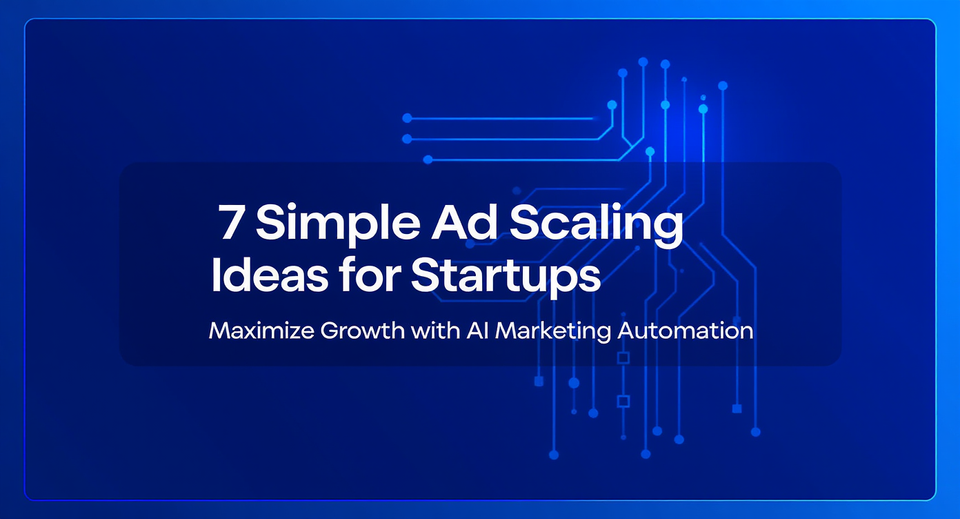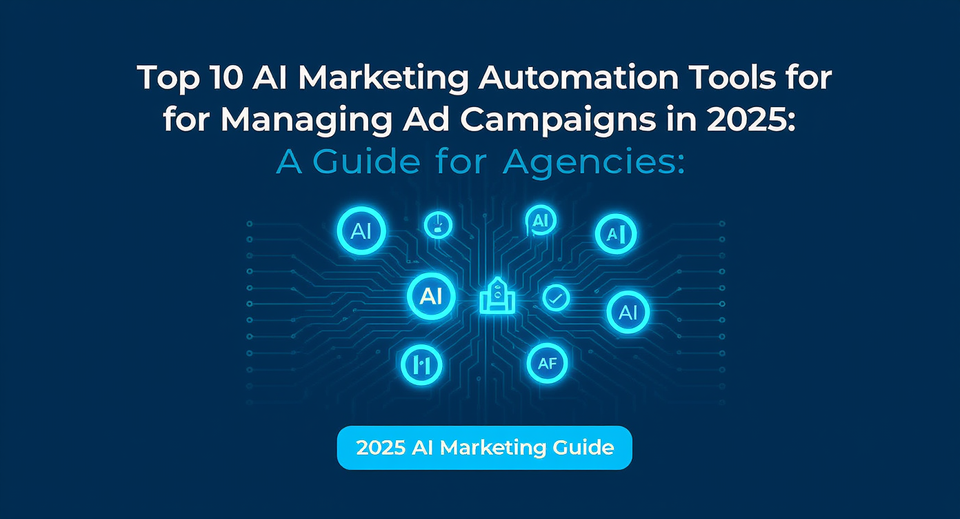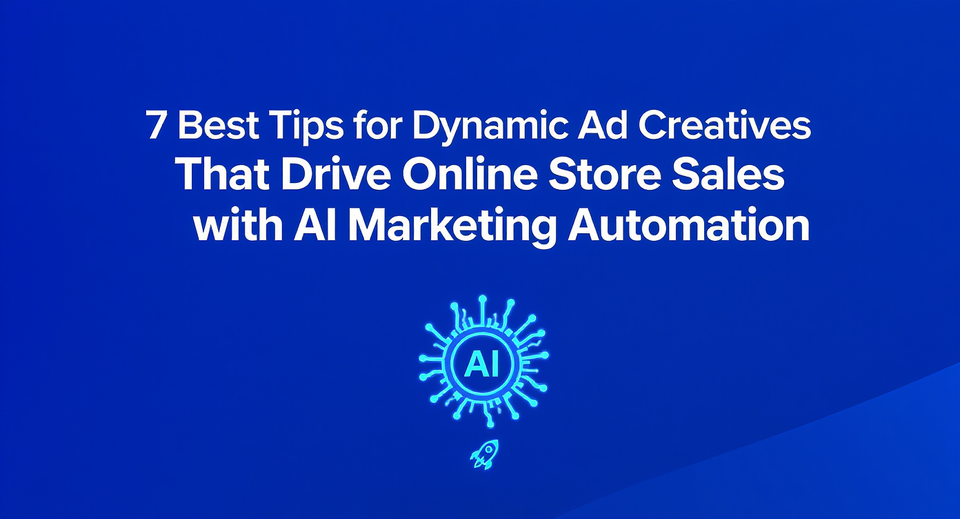How Can AI Marketing Automation Drive Consistent Advertising at Enterprise Scale?
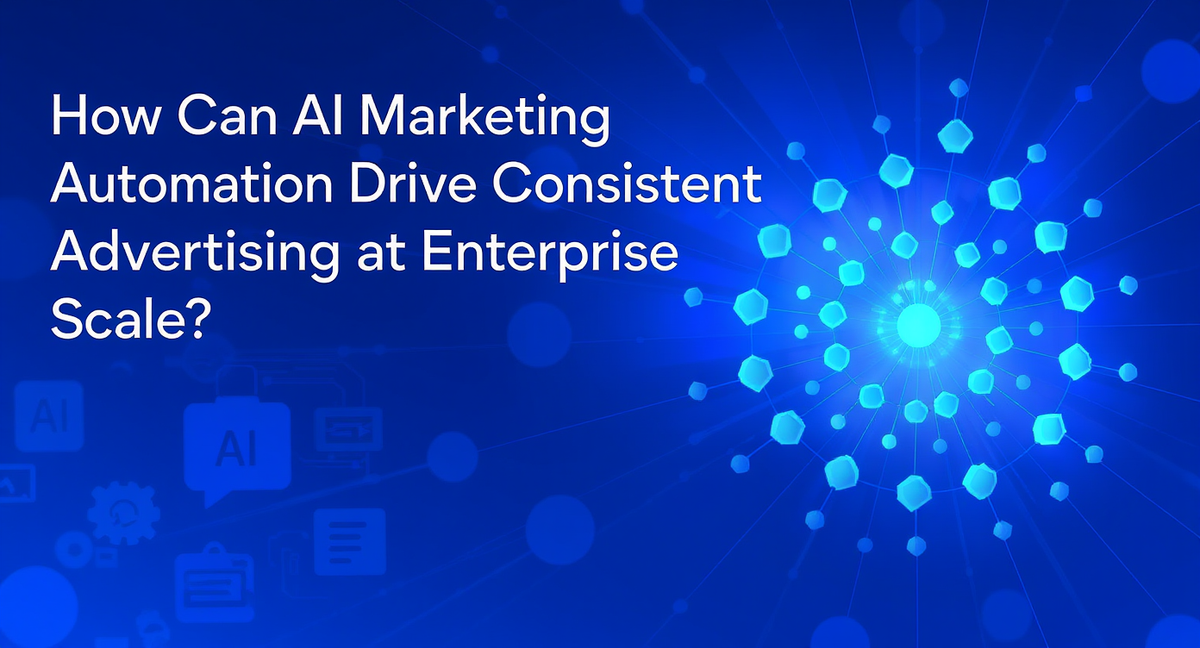
Personalization has evolved from a marketing luxury to a business necessity. For large enterprises managing global brands, the challenge lies not just in personalizing advertising but doing so at scale while maintaining brand consistency. This balance is critical for driving growth without sacrificing the cohesive brand identity that enterprises have invested years building.
According to Epsilon, 80% of consumers are more likely to make a purchase when brands offer personalized experiences. Yet, Gartner reports that 63% of digital marketing leaders still struggle with personalization. This gap represents both a challenge and an opportunity for enterprise brands ready to master personalized advertising through AI marketing automation.
1. The Business Case for Personalized Advertising at Scale
Personalization delivers measurable business impact that justifies the investment required to implement it at enterprise scale:
Revenue Growth: According to McKinsey, companies that excel at personalization generate 40% more revenue from those activities than average players. This translates to significant growth potential for large enterprises implementing automated marketing platforms.
Enhanced Customer Loyalty: Accenture research shows that 91% of consumers are more likely to shop with brands that recognize them, remember them, and provide relevant offers and recommendations.
Competitive Differentiation: In crowded markets, personalization creates meaningful differentiation. A study by Infosys found that 86% of consumers say personalization plays a role in their purchasing decisions.
2. Key Challenges Enterprises Face with Personalization
Large enterprises face unique obstacles when implementing personalized advertising at scale:
Brand Consistency Across Segments:
Maintaining a unified brand voice while personalizing for thousands of micro-segments requires sophisticated AI brand management software.
Creative Production Bottlenecks:
Traditional creative workflows cannot support the volume of assets needed for true personalization without AI content creation tools.
Data Silos and Integration:
Enterprise data often exists in disconnected systems, making it difficult to create a unified view of customers.
Operational Complexity:
Managing personalized campaigns across multiple regions, languages, and product lines creates significant operational overhead that marketing campaign builders must address.
3. Strategies for Scaling Personalized Advertising
To overcome these challenges, enterprises should adopt these proven strategies:
Modular Creative Approach:
Develop a system of interchangeable creative components that can be assembled dynamically based on audience attributes while maintaining brand guidelines.
Audience Taxonomy:
Create a structured framework for audience segmentation that balances granularity with manageability.
Centralized Brand Governance:
Implement centralized AI brand management software with distributed execution capabilities to maintain consistency while enabling local relevance.
Creative-Led Targeting:
Instead of relying solely on audience targeting, use creative personalization as a targeting mechanism to let algorithms match the right creative to the right person.
4. Technology Solutions for Enterprise-Scale Personalization
Modern technology platforms are essential for implementing personalization at enterprise scale:
AI Content Creation Tools:
SurgeGrowth's AI content creation platform enables brands to launch thousands of personalized, high-performing ad creatives efficiently and on-brand. This approach combines automated creative workflows with human-quality outputs, making it possible to scale campaigns tailored to location, audience type, intent, or behavior.
Dynamic Creative Optimization (DCO):
Advanced DCO platforms allow for real-time assembly of creative elements based on user data and context.
Customer Data Platforms (CDPs):
Unify customer data across touchpoints to create comprehensive profiles that power personalization.
Marketing Campaign Builders:
Orchestrate personalized customer journeys across channels with rules-based or AI-driven decision-making.
5. Implementation Roadmap for Enterprise Personalization
Successful implementation of AI marketing automation at scale requires a phased approach:
Phase 1: Foundation Building (1-3 months)
- Audit existing creative processes and identify bottlenecks
- Develop a unified audience taxonomy
- Establish brand governance framework
- Select automated marketing platform partners
Phase 2: Pilot Programs (3-6 months)
- Implement personalization for high-value segments
- Test creative variations and messaging
- Measure impact against control groups
- Refine processes based on learnings
Phase 3: Scale Expansion (6-12 months)
- Extend personalization across additional segments
- Automate creative production workflows
- Integrate personalization across channels
- Develop advanced measurement frameworks
6. Measuring Success: Metrics That Matter
To evaluate the effectiveness of AI marketing automation at scale, enterprises should track:
Performance Metrics:
- Conversion rate lift by segment
- Customer acquisition cost reduction
- Customer lifetime value impact
- Return on ad spend (ROAS)
Operational Metrics:
- Creative production efficiency
- Time-to-market for campaigns
- Brand consistency score
- Creative variation volume
7. SurgeGrowth: Enabling Creative-Led Growth at Scale
For enterprises struggling with the creative demands of personalization, SurgeGrowth offers an AI content creation tool designed specifically for large-scale implementation. The platform enables brands to launch thousands of personalized, high-performing ad creatives without compromising brand consistency.
SurgeGrowth's approach focuses on "Creative as Targeting," where personalized creatives do the targeting work instead of relying solely on audience filters. This strategy aligns perfectly with how modern ad platforms like Meta and LinkedIn operate, using machine learning to serve ads based on creative relevance rather than granular audience targeting.
With SurgeGrowth's marketing campaign builder, enterprises can automate the production of hundreds or thousands of creative variants across formats while maintaining design consistency. The platform's dynamic creative templates allow for rapid experimentation with messaging, visuals, and CTAs—perfect for A/B testing and localization at enterprise scale.
8. Future Trends in Enterprise Personalization
As AI marketing automation evolves, enterprises should prepare for these emerging trends:
Predictive Personalization: Moving beyond reactive personalization to anticipate customer needs before they're expressed.
Hyper-Contextual Relevance: Incorporating real-time contextual factors like weather, local events, and trending topics into personalized messaging.
Cross-Channel Consistency: Ensuring personalized experiences remain consistent as customers move between digital and physical touchpoints.
Privacy-First Approaches: Developing personalization strategies that respect evolving privacy regulations and consumer expectations.
Conclusion: Balancing Scale and Personalization
For large enterprises, the future of advertising lies in finding the sweet spot between mass scale and individual personalization. By implementing the right strategies, technologies, and automated marketing platforms, enterprises can deliver personalized experiences that drive growth while maintaining the brand consistency that builds long-term equity.
According to Salesforce, 66% of customers expect companies to understand their unique needs and expectations. Meeting this expectation at enterprise scale is no longer optional—it's a competitive necessity. The brands that master AI marketing automation will be positioned to win customer loyalty and market share in an increasingly personalized world.
FAQs
Q: How can large enterprises balance personalization with brand consistency? A: Enterprises should implement AI brand management software with modular creative approaches that allow for personalization within brand guidelines. Technology platforms like SurgeGrowth can help automate this process while maintaining brand standards.
Q: What technology investments are most critical for scaling personalized advertising? A: The most critical investments include AI content creation tools, customer data platforms (CDPs) to unify customer data, dynamic creative optimization tools, and marketing campaign builders that can orchestrate personalized experiences across channels.
Q: How long does it typically take to implement AI marketing automation at enterprise scale? A: Full implementation typically takes 12-18 months, but organizations should follow a phased approach, starting with pilot programs for high-value segments before expanding across the enterprise.
Q: How can enterprises measure the ROI of automated marketing platforms? A: Key metrics include conversion rate lift by segment, reduction in customer acquisition costs, impact on customer lifetime value, and improvements in creative production efficiency and time-to-market.
Q: What are the biggest challenges enterprises face when scaling personalization? A: The biggest challenges include maintaining brand consistency across segments, overcoming creative production bottlenecks, integrating siloed customer data, and managing the operational complexity of personalized campaigns across multiple regions and product lines.
Citations
- https://www.epsilon.com/us/about-us/pressroom/new-epsilon-research-indicates-80-of-consumers-are-more-likely-to-make-a-purchase-when-brands-offer-personalized-experiences
- https://www.mckinsey.com/capabilities/growth-marketing-and-sales/our-insights/the-value-of-getting-personalization-right-or-wrong-is-multiplying
- https://www.accenture.com/us-en/insights/interactive/personalization
- https://www.gartner.com/en/newsroom/press-releases/2020-11-11-gartner-survey-reveals-marketing-leaders-struggle-to
- https://www.infosys.com/newsroom/press-releases/2013/digital-consumers-study.html
- https://www.salesforce.com/resources/research-reports/state-of-the-connected-customer/

